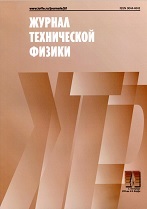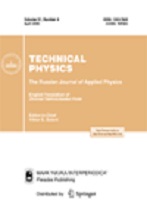|
This article is cited in 7 scientific papers (total in 7 papers)
Plasma
Generation of two pulses of runaway electron beam current
D. V. Beloplotov, V. F. Tarasenko, D. A. Sorokin, V. A. Shklyaev
Institute of High Current Electronics, Siberian Branch of the Russian Academy of Sciences, Tomsk
Abstract:
Conditions for generation of two pulses of a runaway electron beam current upon breakdown of tip–plane and tube–plane gaps in high-pressure air, nitrogen, and helium are studied. Three regimes of generation of the runaway electron beam are experimentally obtained for the three gases at different pressures and different rise times of the voltage pulse with an amplitude of several tens of kilovolts. In the first regime, a single pulse of beam current is generated at the maximum voltage across the gap at the start of the streamer from the cathode. The pulse duration behind the anode is about 100 ps. Two pulses of beam current are observed in the second regime at a lower pressure. The first pulse is generated at the same moment whereas the second pulse is detected after closing of the gap by the streamer (first ionization wave). The electron energy in the second pulse is significantly less than that in the first pulse but the duration and amplitude of the beam current are greater under optimal conditions. In the third regime that is implemented at lower (in comparison with the second regime) pressures, the beam current after the first pulse continues without interruption in the quasi-stationary stage and has a duration of several hundreds of picoseconds.
Keywords:
generation of runaway electrons, ultrashort avalanche electron beam, second pulse of the beam current.
Received: 14.10.2020
Revised: 17.11.2020
Accepted: 19.11.2020
Citation:
D. V. Beloplotov, V. F. Tarasenko, D. A. Sorokin, V. A. Shklyaev, “Generation of two pulses of runaway electron beam current”, Zhurnal Tekhnicheskoi Fiziki, 91:4 (2021), 589–599; Tech. Phys., 66:4 (2021), 548–559
Linking options:
https://www.mathnet.ru/eng/jtf5033 https://www.mathnet.ru/eng/jtf/v91/i4/p589
|


| Statistics & downloads: |
| Abstract page: | 77 | | Full-text PDF : | 21 |
|





 Contact us:
Contact us: Terms of Use
Terms of Use
 Registration to the website
Registration to the website Logotypes
Logotypes








 Citation in format
Citation in format 
